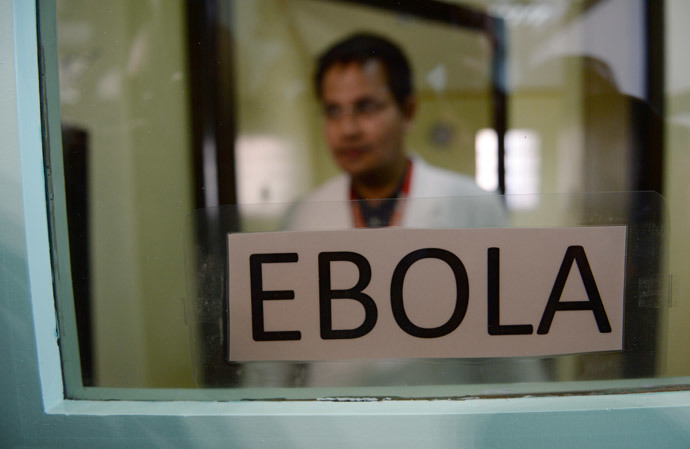The Trans-Pacific Partnership – one sick treaty?

The secretive Trans-Pacific Partnership (TPP) will increase patent protection for the benefit of big pharmaceutical companies, but are such policies really in the interests of global health?
Eradicating disease from the face of the Earth
There are many illnesses that I have never known in my life, but surely two of the most profound are smallpox and polio. Smallpox once killed 400,000 people annually in Europe alone, with as many as 500 million deaths worldwide attributed to the disease in the first 80 years of the 20th Century. Polio was once also endemic to most parts of the world. It killed, too, but also left sufferers – many of them children – with serious physical disabilities, including partial paralysis. Even in highly developed countries like the USA, tens of thousands of children contracted polio each year with scores forced into the dreaded “iron lung” just to keep breathing. Yet today polio exists in only a handful of countries.
These radical advances in global health are due to nothing more complicated than cheap medicine and extensive public health programs that owe more to the spirit of scientific discovery than mercantilism. Such advances often originate from unlikely sources.

In the late 18th century, Edward Jenner, a small-town English doctor, noticed that milkmaids rarely contracted smallpox. He soon came to the conclusion that this was because they were often infected with cowpox, a similar but less dangerous disease, as a result of their occupation, and that this immunized them against future infection. Jenner used this knowledge to develop a successful and safe vaccine against smallpox which he then refined and shared with others. The British government eventually awarded Jenner £30 000 to allow him to abandon his practice and focus on the vaccine. It was a generous gift, but could not have motivated the doctor – he had already made his discovery and shared his work before these awards were bestowed on him.
The history of polio is similar. A safe vaccine was developed against polio by research scientist Jonas Salk in 1955. Salk was funded by the National Foundation for Infantile Paralysis (now the March of Dimes) a group set-up by President Franklin D. Roosevelt to combat polio. When asked in an interview who owned the patent to his vaccine, Salk was taken aback, eventually responding, “There is no patent. Could you patent the sun?” Shortly thereafter Albert Sabin, co-operating with Russian scientists, came up with a cheaper oral polio vaccination that is now used in most of the developing world. He didn’t patent it, either.
Salk, Sabin and Jenner are hardly household names, yet their effect on history is hard to overstate. I was born in the 81st year, but I have never received a vaccination against smallpox, because I was one of the first children born into a world where no one would ever get this lethal illness again. Shortly before I arrived, a massive, global public health program, spearheaded by the United Nations and World Health Organization, officially eradicated smallpox. These organizations are currently working to send polio the same way. Indeed, they are nearly there.
Public health projects don’t just effectively save lives; they also save money – enormous quantities of money. The cost of fighting smallpox is now zero, the cost of fighting polio nearly so. Millions of people are alive and well, at work and caring for their loved ones today because of these medications and the public funding that financed their dissemination. In a world with less debilitating disease, we are all much more productive.
This trend continues. The most promising treatment that currently exists for Ebola – the drug ZMapp – has been developed by small businesses and academic researchers relying heavily on government funding, Governments rightly identified that while Ebola might have been rather limited in its spread over the last 40 years, and it does remain a threat to global health. Over the same period, large pharmaceutical conglomerates chose not to pursue Ebola treatments because the disease has killed relatively few people (so far) and none of them could afford to pay top dollar for a cure. Treating Ebola, so it is said, just isn’t profitable.

Private and public profit
But this is a warped and narrow way of understanding profit. Getting rid of Ebola is profitable in exactly the same way that getting rid of smallpox and polio was profitable. In fact, it is hard to think of something that could generate a bigger return on investment. The profit from these public health programs is clear: more people living longer, no hospital bills, no psychological suffering, no orphans and widows, no blinded, paralyzed or scarred survivors, no relatives spending weeks or months away from work caring for the ill and dying. The profits, in fact, are so all-pervasive that we often don’t even fully appreciate them. Contrary to popular wisdom, money can buy these things. Money paid for Salk and Sabin’s research and allowed Jenner to widely share his vaccine. Money paid for the UN programs that have virtually wiped out some diseases and inhibited the spread of others. But it was public money invested in humanity to generate public profit.
This way of operating is under attack. Instead of using laws and international structures to tilt the playing field towards the small researchers and public bodies that are contributing to public health and public profits, we are instead devising ways to allow private companies to appropriate a greater share of the wealth generated by medical advances.
This was made apparent again last week when WikiLeaks revealed a new draft of the Trans-Pacific-Partnership agreement. This treaty is currently being negotiated between about a dozen Pacific Rim countries, including the US, Canada, Malaysia, Japan and Vietnam. The public is not invited to contribute to these discussions but industry leaders are. Perhaps therefore it is unsurprising that some of the provisions under debate in this tentative treaty will, if agreed upon, help to lock-in a level of patent protection that is not compatible with pursuing public health goals. In particular, some of the TPP provisions may facilitate a tactic known as “evergreening” in which companies procure patent extensions on the basis of minor changes to the patented formula (e.g. exchanging one inactive ingredient for another, or coming up with a secondary use for the medication), and in limiting the criteria a product must fulfill in order to be eligible for a patent, thereby making it easier to procure patents for products that are not what the average person would be perhaps willing to acknowledge as particularly innovative. In particular, the draft argues for a radical increase in the duration of patent protection for vaccines and some forms of cancer treatment. Earlier versions of the draft even tried to secure patents for particular methods of performing surgery, something that has traditionally and without question been freely shared among practitioners.
The object of the TPP draft, clearly, is to maximize profits – but not in the way that Jenner or Salk or the World Health Organization maximized profit by giving medicine away. The TPP will help to maximize profits by increasing the ability of large corporations to acquire or hold international monopolies on a product for longer periods than they are currently able to. They can use this position to ensure that prices remain high – too high for many. Those unable to afford necessary medicine will suffer, become sicker, and in many cases die. They will probably be unable to work for periods of time and they may leave dependents behind them. Or they may survive the illness but never fully recover without proper medical treatment. Multiply this scenario a thousand times or ten thousand times and you don’t just have a humanitarian problem, you have an economic problem, too.
Overly robust patent protections, especially rules that permit practices like “evergreening,” are not good economic sense for society as a whole. Moreover, patent revenues are not the only way to fund medical research. Many extremely important breakthroughs in medical science were not funded this way and truly wide-scale implementation often requires some degree of public funding. Rules, like the ones proposed in the TTP protect profit – private profit that is measured as abstract numbers on a bank account. And they do so at the expense of public profit that is measured in terms of real productivity and human benefit.
At a time when the world is once again presented with the specter of a deadly virus, world leaders would do better to focus on working together than on offering further protection to some of the most privileged among us.
The statements, views and opinions expressed in this column are solely those of the author and do not necessarily represent those of RT.
The statements, views and opinions expressed in this column are solely those of the author and do not necessarily represent those of RT.













